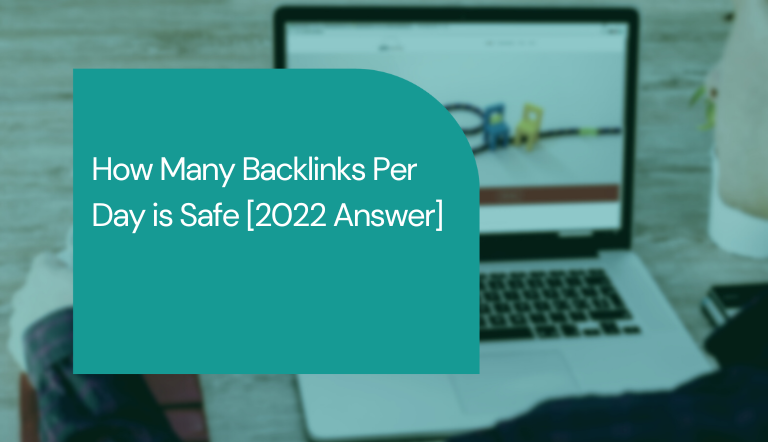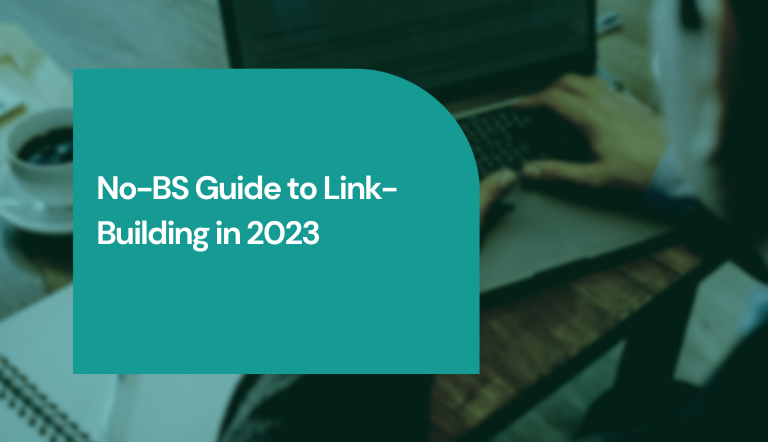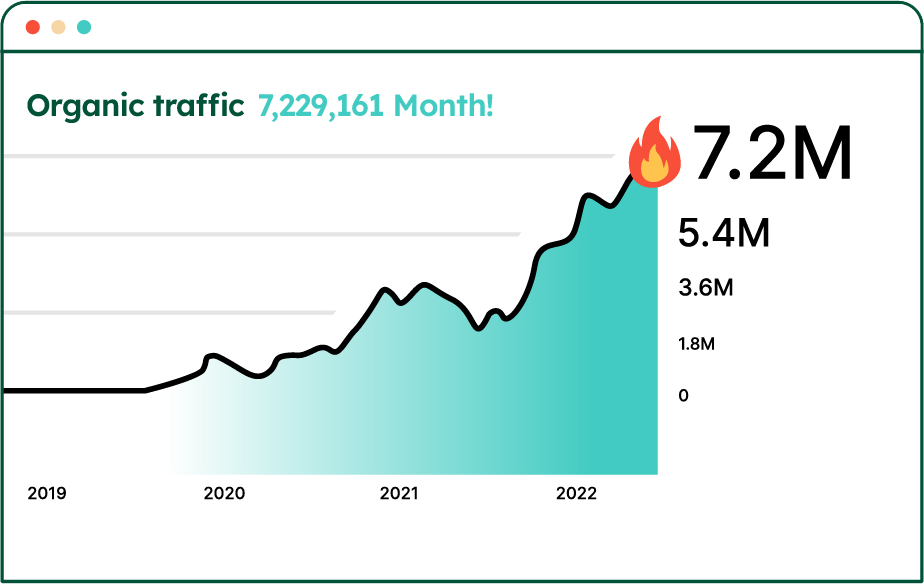The first step to kickstarting your link-building is determining the number of backlinks you want to build per month.
This leads to questions such as:
- How many backlinks is it safe to build per day?
- Is there such a thing as too many backlinks?
- How many backlinks should I build per month?
In this article, we’re going to answer all those questions and more, starting with:
How Many Backlinks Per Day is Safe?
Short answer: From active link-building efforts, 10 to 30 backlinks per day is a safe number.
Long answer: It depends. If you’re actively growing your website and are organically driving 30+ backlinks per day, then you’re definitely going to be safe. Heck, in such a case, you can get hundreds of backlinks in a single day and you’d still be completely safe.
Google can see that your website is growing naturally and is going to reward you for it.
The iffy part applies if you’re engaging in questionable link-building practices.
For example, if you buy 100+ PBN backlinks in a single day from BlackHatWorld, then there’s a very good chance for Google to catch on and penalize your website.
In general, if you get a lot of backlinks in a single day using techniques that Google frowns upon, there’s a high chance you’ll get penalized.

This brings us to the point of this article: how can you build backlinks safely (and at scale) in such a way that you don’t run a risk of getting penalized by Google?
How to Build Backlinks Safely
#1. Build Natural Links
First things first – you want your backlink profile to look natural.
Let’s say, for example, you launch your brand-new website and start building a ton of backlinks to your main money page.
Now, if you build 20 links to that one page while your homepage has 2 backlinks total, then this is going to look very unnatural to Google.
The more real (i.e. not manufactured or paid for) your backlink profile is, the less likely it is for Google to think it’s suspicious.
Here are our best tips on making sure your backlink profile looks natural:
- Aim for a realistic link distribution. If you’re building, for example, 20 backlinks a day, build 10 of them to your homepage and 1-2 to each of your key pages.
- Use realistic anchor texts. If you’re linking to your homepage, a “realistic” anchor text is your brand name or product/service name. An unrealistic anchor text, on the other hand, would be “best CBD store” or “order CBD Boston.”
- Use minimal direct match anchors. Direct match anchors are good for your website but they should be kept at a minimum. If your homepage suddenly gets 10 links in a day and all of them have “best law firm NYC” as an anchor, that would be extremely suspicious for Google.
#2. Focus on Quality Over Quantity
With link-building, quality matters way more than quantity.
This means that if you have these 2 options:
- Build a single link from a real, authoritative website (AuthorityHacker, Mashable.com, WireCutter, etc).
- Build 100 backlinks from fresh blogs that drive almost no organic traffic.
You’re going to benefit a lot more from option #1.
So if you were considering buying a “100 backlinks for 10 bucks” package from Fiverr, stop right there – that’ll only harm your website.
As we already established, building a lot of backlinks for your website is safe. However, the quantity of these links should not come at the expense of the quality.
#3. Vet & Choose the Best Backlinks
We just established that securing quality backlinks is more important than securing many backlinks.
But what IS a quality backlink?
Here’s how you vet backlinks and decide whether they’re worth procuring in the first place:
- Look for topical relevance. You want links to your site to be topically relevant. E.g. if your website is about personal finance, a link from someone’s cooking blog won’t deliver any results.
- Use DA and other trust metrics. Moz’s Domain Authority (and other similar metrics) are good for understanding, at a glance, how useful a backlink from a certain website would be. Keep in mind, though, that these metrics are not always accurate and should be taken with a grain of salt.
- Check monthly organic traffic. One of the best ways to see whether Google looks at a website favorably or not is to look at its organic traffic. If they’re driving a ton of traffic, chances are, the backlink you’ll get from them will positively impact your rankings.
#4. Avoid Link Farms
Some websites are built specifically for the purpose of selling backlinks. Such websites can seem like normal blogs, but once you look closer, you’ll see that half the content published consists of guest posts.
Google easily spots such websites and devalues any backlinks originating from them, and as such, we recommend you avoid link farm backlinks as much as possible.
So you know how to spot such websites, here’s an example:

Supposedly, the website is about rugby, but once you scroll down, you see a ton of unrelated articles on random topics:

And if this isn’t obvious enough, we can also run the website through Ahrefs and see that it’s not doing too well in terms of SEO:

They have 1,000+ backlinks (which is decent) but they’re driving a grand total of 33 traffic per month, which is not a good sign.
#5. Web 2.0 Backlinks Are Useless
Web 2.0 backlinks are links from user-generated content websites such as Medium, Reddit, and so on.
You may have come across vendors on Fiverr, BlackHatWorld, and other SEO forums selling packaged deals of hundreds of Web 2.0 backlinks.
The thing is, these links don’t actually count for anything in terms of SEO.
Google knows that user-generated content websites have a ton of outgoing links, and as such, doesn’t trust them too much in terms of backlink power.
FAQ
#1. What Makes a Backlink Safe?
A backlink is safe if it meets the following criteria:
- It comes from a real website (and not a link farm).
- It does not have an overly optimized anchor text (e.g. a direct match with the keyword you’re trying to rank for).
- It doesn’t fall under Google’s classification of a link scheme.
#2. How Long Does It Take For Backlinks to Work?
It can take anything from several days to six months for backlinks to get indexed. On average, though, if you start building backlinks today, you’ll likely be able to see some results within three to six months.
#3. How Many Backlinks Per Month is Safe?
Practically speaking, there’s no limit to how many backlinks you can build in a month. If the links come from real websites, then they’re only going to help your website’s SEO.
#4. How Many Backlinks Should I Build Per Month?
This depends on your budget, how fast you want to grow, and so on. From our experience, 10 to 30 backlinks per month is enough to get solid results from a website that isn’t in an overly competitive niche.
#5. How Many Backlinks Are Too Many?
There’s no such thing as too many backlinks – the more links your website has, the better it’s going to perform on Google. That is, of course, if the backlinks are not from PBN websites or link farms. Such links, more often than not, can hurt your website’s SEO.





